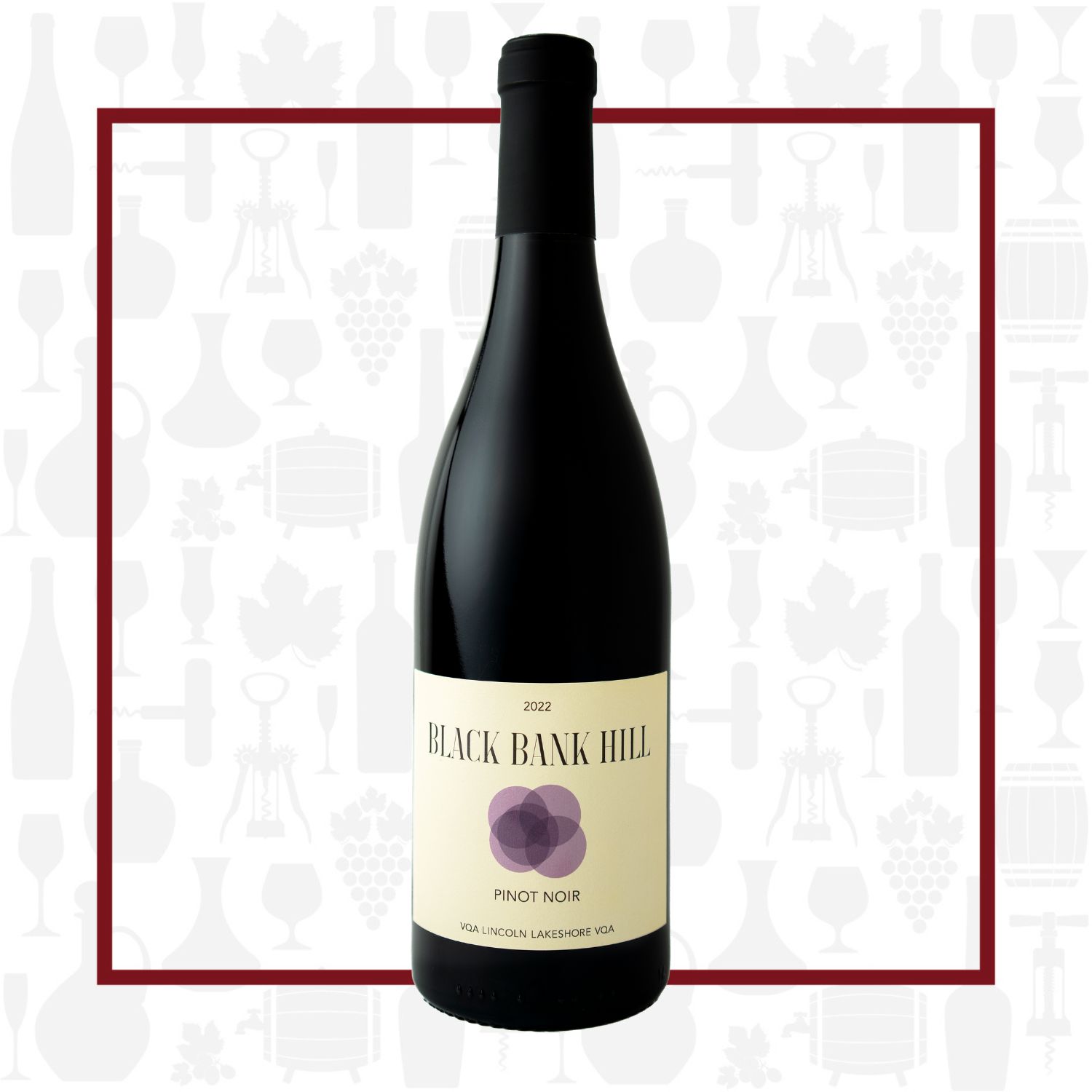Cellar Profile
Black Bank Hill is a 20-acre vineyard and artisanal winery in the Lincoln Lakeshore sub-appellation of the Niagara Escarpment wine region. Founded by vintner Taylor Emerson in 2017, Black Bank Hill’s sole focus is to produce exceptional and distinct wines from estate-grown grapes that express the unique character of the vineyard and terroir. To achieve the highest level of quality, all wines are farmed, produced and bottled on the property by winemaker Jonathan McLean. The subtle qualities of this unique vineyard are captured and preserved using traditional methods of grape growing at a small scale, including low yields, native yeasts and minimal processing in the cellar.
Region
Bordered by Lake Ontario on the north, the Niagara River on the east and the Welland River and Hamilton to the south and west, the Niagara Peninsula is the largest and most diverse viticultural area in Canada. Passing directly through the appellation is the Niagara Escarpment, rising to some 177m (575ft) above sea level. This north-facing cliff formation is the essence of the appellation, providing the slopes (determining sunlight) and elevations (determining the influence of breeze and lake effects) that distinguish unique sub-appellations and a diverse range of grape-growing conditions. West Niagara is one of three regional appellations within the Niagara Peninsula that encompasses six sub-appellations: Beamsville Bench, Twenty Mile Bench, Short Hills Bench, Lincoln Lakeshore, Creek Shores and Vinemount Ridge. The Lincoln Lakeshore VQA sub-appellation is known for breezes that cross the deep waters of Lake Ontario to cool the sun-drenched vineyards in the summer and warm them in the cooler seasons, resulting in a longer growing season and moderated conditions for steady, even ripening.
Vineyard
This 20-acre "escarpment" estate vineyard is situated on Lake Iroquois Plain, which gently slopes from the base of the escarpment to Lake Ontario, with open sunshine and airflow. Here, the ancient lake bed of glacial Lake Iroquois provides a consistent Trafalgar grey/brown clay, a heavy, clay-dominant mix with varying levels of silt. The clay is ideal for viticulture by limiting and balancing the vigour of the vines, naturally driving them to low yields. The site is protected by the escarpment from prevailing south-westerly winds and benefits from lake-warmed air circulating during the winter months. These factors, along with full sunlight that is free from shadows, create a unique meso-climate of longer periods of warmth, which ensures fruit ripening and exceptional fruit quality.
Winemaking
Sorted, de-stemmed, lightly crushed and given a wild fermentation. Racked into largely neutral French oak barrels for 20-months of élevage prior to beingestate-bottled, unfined and unfiltered.
Tasting Notes
Ruby red colour with a perfumed nose of raspberry, strawberry, violets and dried sage. On the light- to medium-bodied palate you'll find cranberry, fresh rhubarb, strawberry, earthy plum and tea. The tannins are fine and complemented by refreshing acidity and a generous finish.
Varieties
Pinot Noir—chiefly associated with the Burgundy region of France— is grown around the world, mostly in cooler climates. The grape's tendency to produce tightly-packed clusters makes it susceptible to several viticultural hazards involving rot that require diligent canopy management. When young, wines made from Pinot Noir tend to have red fruit aromas of cherries, raspberries and strawberries. As it ages, Pinot has the potential to develop more vegetal and earthy aromas that can contribute to the complexity of the wine. Thin skins and low levels of phenolic compounds lend Pinot to producing mostly lightly-coloured, medium-bodied and low-tannin wines that can often go through phases of uneven and unpredictable aging.

